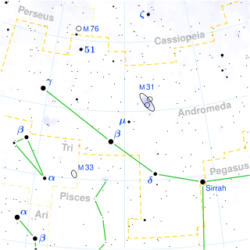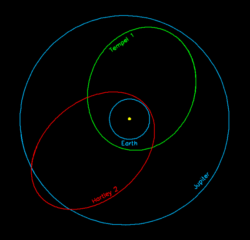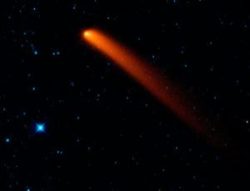Astronomy
Embark on an astronomical journey. Explore the cosmos, study celestial objects, and unravel the mysteries of the universe through astronomy's fascinating realm.
Antlia Constellation
Antlia is a constellation in the southern sky and therefore has been unknown to the ancient Greeks and Romans. Its name means “pump” and it specifically represents an air pump. It was created by the French astronomer Abbé Nicolas Louis de Lacaille, who created fourteen constellations for the southern sky to fill some of the faint regions. He originally named it Antlia pneumatica to commemorate the air pump invented by the French physicist Denis Papin. It was later adopted by the International Astronomical Union as one of the 88 modern constellations under the shortened name of Antlia. Main Stars and Deep Sky Objects The Antlia constellation has no bright stars.…
Andromeda Constellation
Andromeda is a constellation in the northern sky. It was one of the 48 constellations listed by the 2nd century astronomer Ptolemy, and it remains one of the 88 modern constellations today. The Andromeda Galaxy is named after the constellation, as it appears within its boundaries.
Hartley 2 Comet
Comet Hartley 2 has made it to the news recently: first because of the comet's flyby near Earth and then due to it being visited by the Deep Impact spacecraft.
Io – Moon of Jupiter
Io is the most volcanically active body in the solar system. It is the innermost of Jupiter's four major moons also known as the Galilean moons, named after their discoverer. Io's surface is constantly under construction. The volcanic eruptions quickly reshape every part of the moon's crust, so that a map of Io wouldn't stay accurate for quite long.
Dark Asteroids Discovered, Possible Threat to Earth
Dark asteroids near Earth, hard to spot but potential threats. WISE infrared telescope helps detect them. What's the risk of asteroid impact?
Possibilities for Life on Mars
An article was recently published by Scientific American, a very reputable science magazine, stating that evidence was found that life existed on Mars and was brought to Earth on a meteorite. The meteorite in question is called "Allan Hills 84001". It was blasted from Mars by a huge meteorite impact 16 million years ago and crashed on Earth 13,000 years ago.
Did you know? The Moon has an Atmosphere
It is a common misconception that the Moon’s surface is a perfect vacuum. It is not! The Moon indeed has an atmosphere, a very tenuous one however. If you could capture the Moon’s entire atmosphere, it would weigh about 10,000 kg. In other words, it would weigh less than a large truck. Sources of the lunar atmosphere There are two main sources of the lunar atmosphere. One of them is outgassing, which is the release of gasses that originate from radioactive decay processes deep inside the crust and mantle of the Moon. The second source is through a process known as sputtering: atoms are ejected from solid materials on the…







